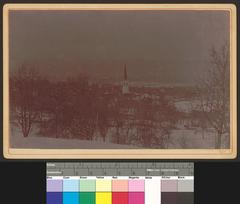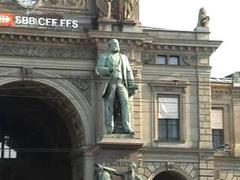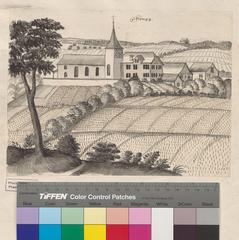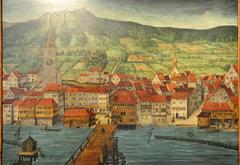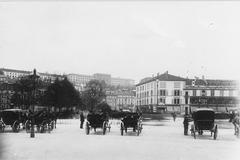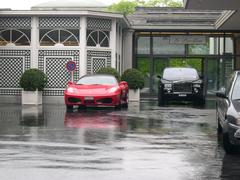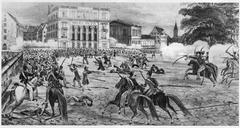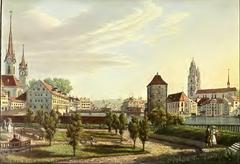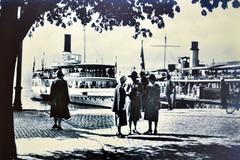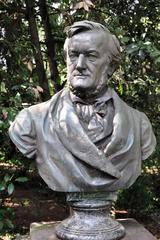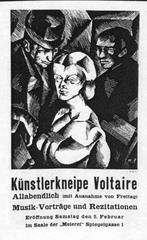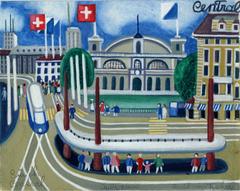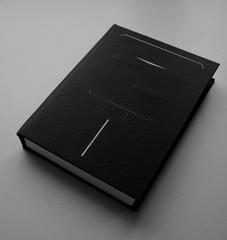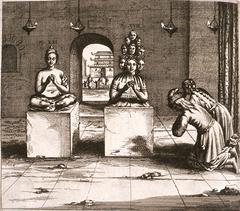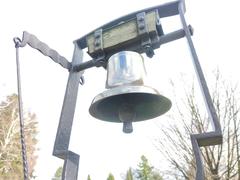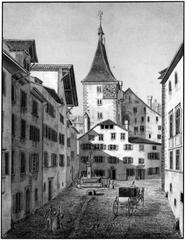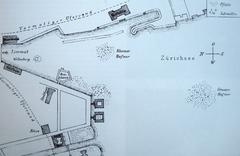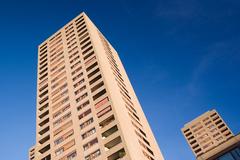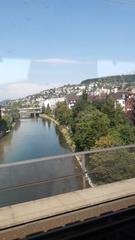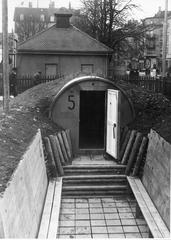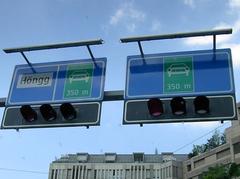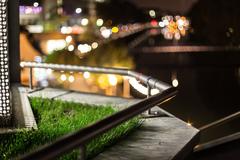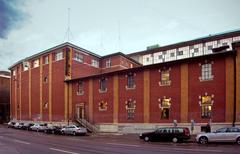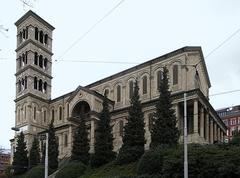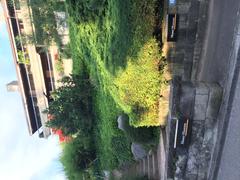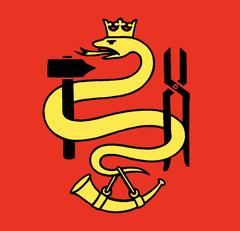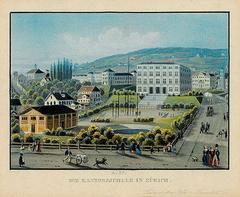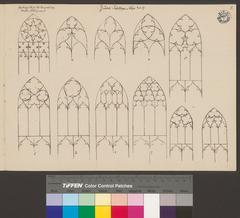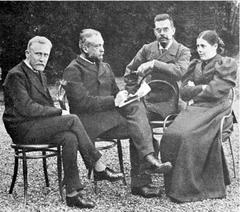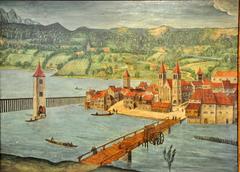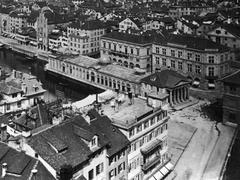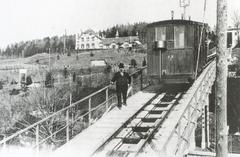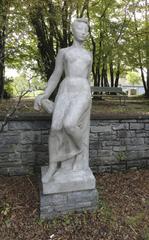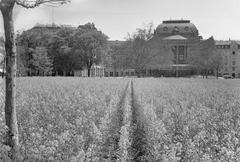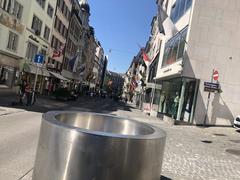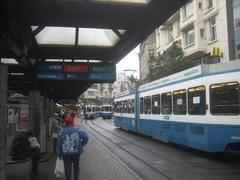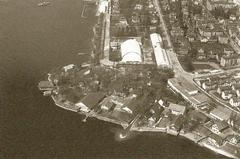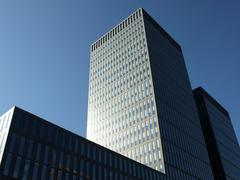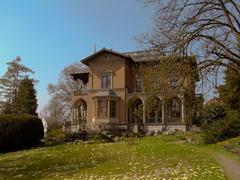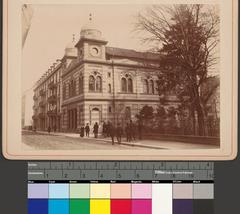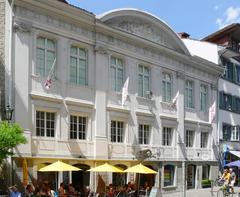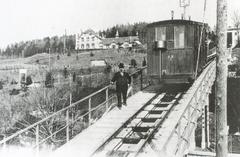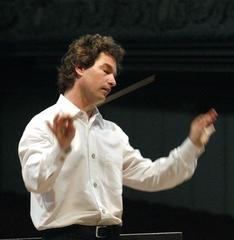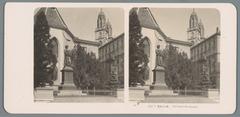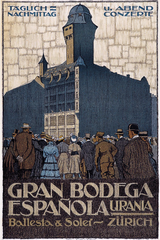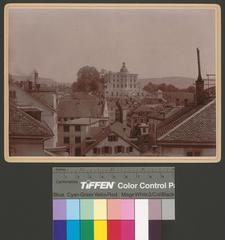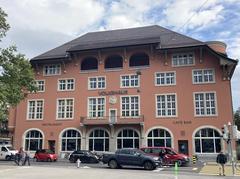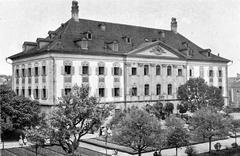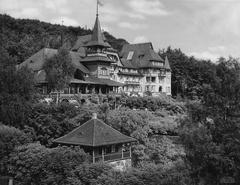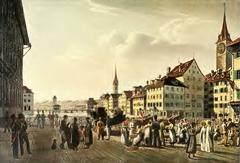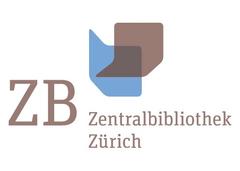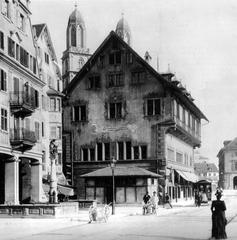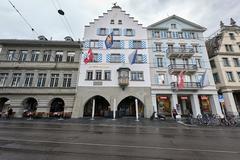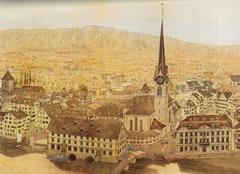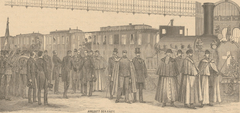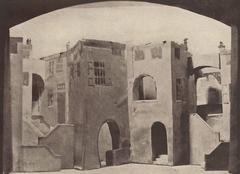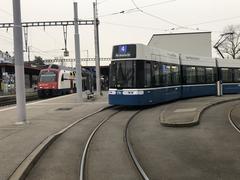Central Signal Box Building Zurich: Visiting Hours, Tickets, and Historical Sites Guide
Date: 14/06/2025
Introduction
The Central Signal Box Building at Zürich Hauptbahnhof (Zürich HB) stands as a testament to Swiss railway innovation, architectural modernism, and urban transformation. As a pivotal component within Switzerland’s busiest train station, this landmark has managed the intricate flow of rail traffic for decades. Its evolution from a mid-century concrete command center to an iconic copper-clad structure symbolizes both the city’s engineering prowess and its adaptive approach to heritage and urban development.
This comprehensive guide explores the historical, technological, and architectural significance of the Central Signal Box, while providing practical visitor information, including viewing opportunities, ticketing, accessibility, and nearby attractions. Whether you are an architecture enthusiast, a railway aficionado, or a curious traveler, this article equips you with key insights and tips for an enriching Zürich visit.
For further details on Zürich Hauptbahnhof, railway operations, and city attractions, consult the official Swiss Federal Railways (SBB) website and Zürich Tourism official site.
Table of Contents
- Introduction
- Historical Background
- Architectural and Cultural Significance
- Urban Integration and Development
- Visiting the Central Signal Box
- Nearby Attractions
- Frequently Asked Questions (FAQ)
- Conclusion
- References
Historical Background
Early Railway Signaling in Zürich
Zürich Hauptbahnhof, opened in 1847 as the northern terminus of the Swiss Northern Railway (Spanisch-Brötli-Bahn), quickly became a nucleus for Swiss rail operations (Swiss Federal Railways (SBB)). Initially, rail signaling relied on decentralized mechanical and electro-mechanical systems, including notable signal boxes like the Stellwerk «Seufzerbrücke». As rail traffic intensified in the 20th century, these systems became inadequate, prompting the need for centralized, efficient control.
Construction and Modernization
In response to increasing congestion and technological demands, Swiss Federal Railways (SBB) commissioned the Central Signal Box between 1963 and 1966. Designed by architect Max Vogt, the building’s six-story concrete form embodied the functionalist ethos of its time, prioritizing durability and visibility across the rail yard (kreis4unterwegs.ch). The structure centralized relay-controlled interlocking systems, streamlining the coordination of points and signals for the sprawling Zürich HB complex.
With the advent of the Zürich S-Bahn in the late 20th century, the signal box underwent significant upgrades, incorporating computerized controllers for greater automation. Despite these advances, original relay equipment remains operational in certain sections, a testament to Swiss engineering resilience.
Architectural and Cultural Significance
The Central Signal Box is celebrated as an architectural icon of Zürich’s rail infrastructure. Its minimalist, monolithic concrete design—later complemented by a distinctive copper-clad façade crafted by Herzog & de Meuron—contrasts sharply with the neo-Renaissance main station building, reflecting Zürich’s progression from historical grandeur to modern efficiency (Divisare). The building’s vertical orientation, panoramic windows, and functional aesthetics ensure its standing as a landmark in Swiss modernist heritage.
Recognized in the Swiss Inventory of Cultural Property of National Significance, the Signal Box embodies the city’s commitment to preserving vital infrastructure while adapting to evolving urban contexts.
Urban Integration and Development
Relationship with Zürich Hauptbahnhof and Europaallee
The Central Signal Box is seamlessly integrated into Zürich HB’s layered architectural landscape. While the grand main station (opened 1871) symbolizes 19th-century ambition, the Signal Box asserts Zürich’s embrace of 20th-century modernity (ArchDaily). The recent development of the Europaallee district has further transformed the building’s surroundings, embedding it within a vibrant mix of offices, residences, and public spaces (Hosoya Schaefer Architects).
Mobility and Public Space
Adjacent to major tram and bus interchanges, the Signal Box area is a vital node in Zürich’s multimodal network, serving more than 460,000 passengers daily—making it busier than Zürich Airport (Hosoya Schaefer Architects). The ongoing HB/Central 2050 masterplan aims to enhance pedestrian connectivity, urban squares, and green spaces around the Signal Box, reaffirming its place in the city’s evolving landscape.
Visiting the Central Signal Box
Viewing, Accessibility, and Hours
- Interior Access: The Signal Box is an active operational facility; interior access is restricted to SBB personnel for security reasons.
- Viewing: The exterior is visible from numerous vantage points, including Lagerstrasse, Europaallee, and several station platforms.
- Accessibility: The surrounding area is fully wheelchair accessible, and public transport connections are plentiful (MySwissAlps).
Tickets and Tours
- Regular Access: No tickets are required to view the exterior; there are no regular public tours of the interior.
- Special Tours: Occasionally, guided tours or open-house events are organized. Check Zürich Tourism or the Tourist Information Center for announcements.
Practical Visitor Tips
- Photography: The best exterior photos are taken from Lagerstrasse or train platforms, particularly in early morning or late afternoon light.
- Travel: Purchase tickets for public transport in advance. Day passes offer convenience for exploring Zürich (Wander We Go).
- Amenities: Zürich HB features extensive shopping, dining, and luggage storage facilities, as well as accessible restrooms and elevators (The Trainline).
Nearby Attractions
- Swiss National Museum: Opposite the station, showcasing Swiss history and culture.
- Bahnhofstrasse: World-renowned shopping street.
- Old Town (Altstadt): Medieval streets, cafés, and nightlife (Earth Trekkers).
- Lindenhof Hill: Panoramic city views.
- Grossmünster & Fraumünster Churches: Iconic landmarks with historic and artistic significance.
- Lake Zürich: Promenades, boat cruises, and scenic relaxation.
- Uetliberg Mountain: Panoramic views accessible via S10 train (Wander We Go).
Frequently Asked Questions (FAQ)
Q: Can I tour the interior of the Central Signal Box?
A: No, interior access is generally not available to the public due to operational security. Occasionally, special tours are announced.
Q: Are there guided tours related to the Signal Box?
A: Some architectural or railway-focused tours may include the exterior as part of a broader itinerary. Check with Zürich Tourism.
Q: Where are the best viewing points?
A: Lagerstrasse, Europaallee, and station platforms offer excellent views.
Q: What are the opening hours for Zürich Hauptbahnhof?
A: The station is open daily, typically from early morning until late evening. Check the SBB website for details.
Q: What amenities are available at Zürich HB?
A: Luggage lockers, dining, shopping, tourist information, restrooms, and accessibility features are all provided.
Conclusion
The Central Signal Box Building at Zürich HB is more than a functional railway hub—it is a symbol of Swiss precision, innovation, and architectural ambition. Its enduring presence amidst Zürich’s dynamic urban environment makes it a must-see for visitors interested in the interplay of transport, design, and history. While interior access remains limited, the building’s striking exterior and its location at the heart of the city’s railway and urban networks ensure its ongoing relevance and appeal.
Plan your visit around special events for a chance to explore more, and use resources like the Zürich Tourist Information Center and the Audiala app to enhance your journey through Zürich’s transport and architectural heritage.
References
- Swiss Federal Railways (SBB)
- Central Signal Box Zürich – kreis4unterwegs.ch
- Zürich Main Station: Architectural and Operational Overview – ArchDaily
- Central Signal Box Project Details – Divisare
- HB/Central 2050 Masterplan – Hosoya Schaefer Architects
- Zürich Tourism Official Site
- The Trainline: Zürich Hauptbahnhof Guide
- Wander We Go: Zürich Visitor Guide
- Zürich Tourist Information Center – Zuri.net
- Earth Trekkers: One Day in Zurich
- MySwissAlps: Zurich
For further exploration of Zürich’s railway and architectural heritage, see our related articles on:
Plan your journey with the Audiala app and follow us for updates on Zürich’s landmarks and events.
